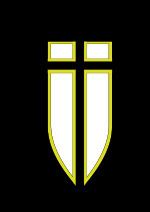Name U-383 Yard number 14 Commissioned 6 June 1942 Construction started 29 March 1941 Length 67 m Beam 6.18 m | Ordered 15 August 1940 Laid down 29 March 1941 Fate Sunk, 1 August 1943 Launched 22 April 1942 Draft 4.74 m | |
 | ||
Builder Howaldtswerke-Deutsche Werft Part of 8th U-boat Flotilla, 9th U-boat Flotilla | ||
German submarine U-383 was a Type VIIC U-boat of Nazi Germany's Kriegsmarine during World War II.
Contents
The submarine was laid down on 29 March 1941 at the Howaldtswerke yard at Kiel, launched on 22 April 1942, and commissioned on 6 June under the command of Oberleutnant zur See Horst Kremser.
Design
German Type VIIC submarines were preceded by the shorter Type VIIB submarines. U-383 had a displacement of 769 tonnes (757 long tons) when at the surface and 871 tonnes (857 long tons) while submerged. She had a total length of 67.10 m (220 ft 2 in), a pressure hull length of 50.50 m (165 ft 8 in), a beam of 6.20 m (20 ft 4 in), a height of 9.60 m (31 ft 6 in), and a draught of 4.74 m (15 ft 7 in). The submarine was powered by two Germaniawerft F46 four-stroke, six-cylinder supercharged diesel engines producing a total of 2,800 to 3,200 metric horsepower (2,060 to 2,350 kW; 2,760 to 3,160 shp) for use while surfaced, two Garbe, Lahmeyer & Co. RP 137/c double-acting electric motors producing a total of 750 metric horsepower (550 kW; 740 shp) for use while submerged. She had two shafts and two 1.23 m (4 ft) propellers. The boat was capable of operating at depths of up to 230 metres (750 ft).
The submarine had a maximum surface speed of 17.7 knots (32.8 km/h; 20.4 mph) and a maximum submerged speed of 7.6 knots (14.1 km/h; 8.7 mph). When submerged, the boat could operate for 80 nautical miles (150 km; 92 mi) at 4 knots (7.4 km/h; 4.6 mph); when surfaced, she could travel 8,500 nautical miles (15,700 km; 9,800 mi) at 10 knots (19 km/h; 12 mph). U-383 was fitted with five 53.3 cm (21 in) torpedo tubes (four fitted at the bow and one at the stern), fourteen torpedoes, one 8.8 cm (3.46 in) SK C/35 naval gun, 220 rounds, and an anti-aircraft gun. The boat had a complement of between forty-four and sixty.
Service history
U-383 served with the 8th U-boat Flotilla for training, and then operationally with the 9th flotilla from 1 October 1942 to 1 August 1943. She completed four patrols in that time, sinking only one ship, the 423 gross register tons (GRT) Icelandic trawler Jon Olafsson on 24 October 1942, during her first patrol.
On the evening of 1 August 1943 U-383 was attacked west of Brittany, at position 47°24′N 12°10′W, by a Short Sunderland of No. 228 Squadron RAF. Responding with flak, the U-boat holed the fuselage and shot away the starboard float and aileron of the aircraft, which pressed home its attack and straddled the U-boat with depth charges before heading back to base. Kremser radioed for assistance, and though three U-boats and three torpedo boats searched during the night and the next day, they failed to locate the crippled U-383 and she was presumed lost.
Wolfpacks
U-383 took part in ten wolfpacks, namely.
